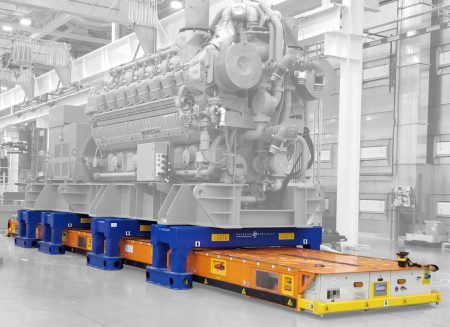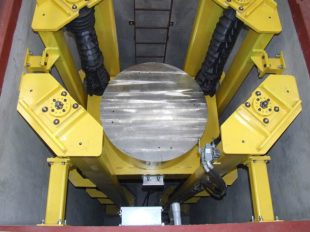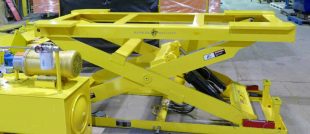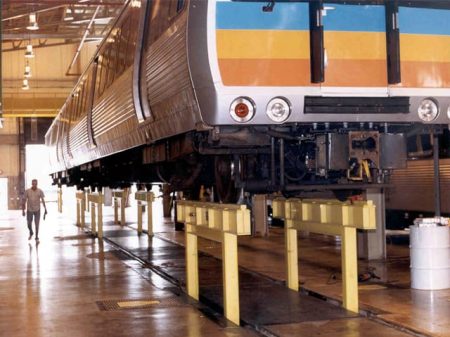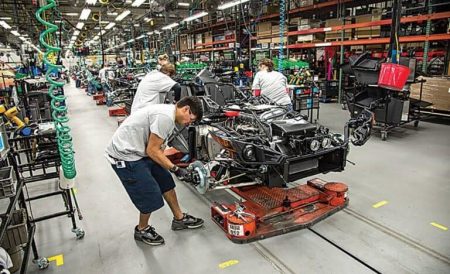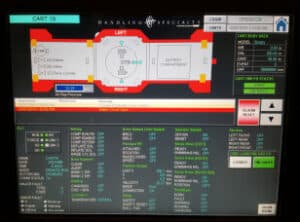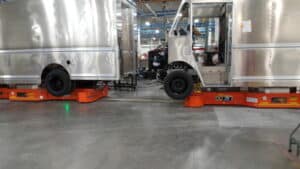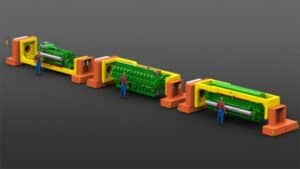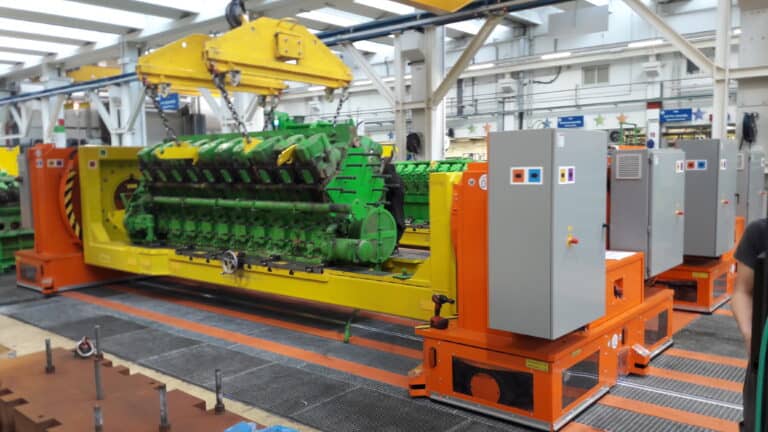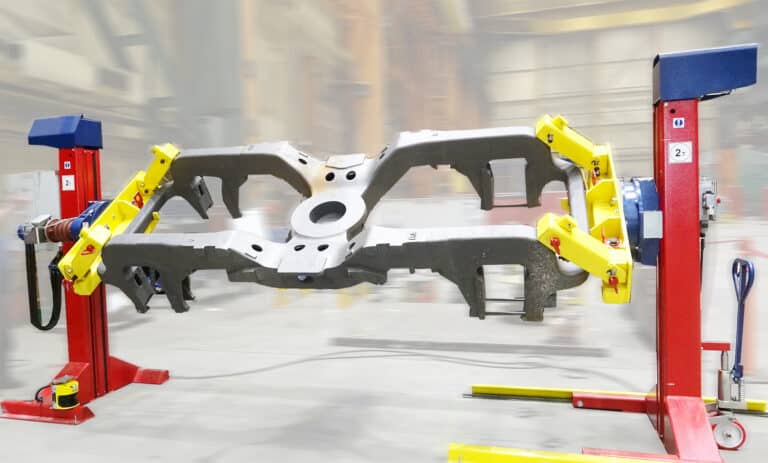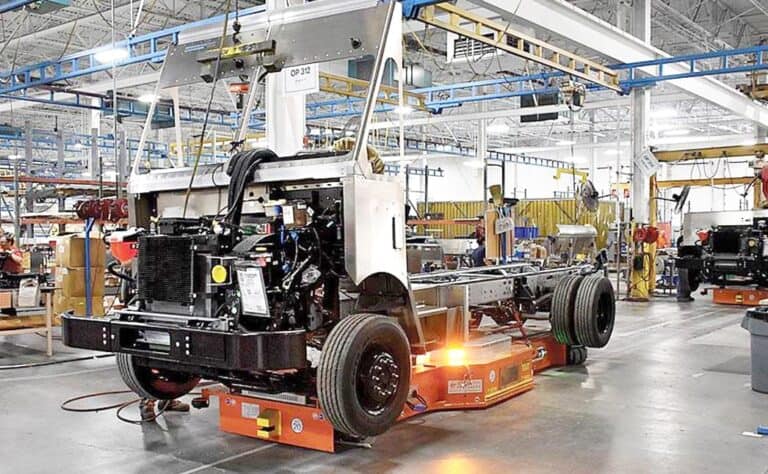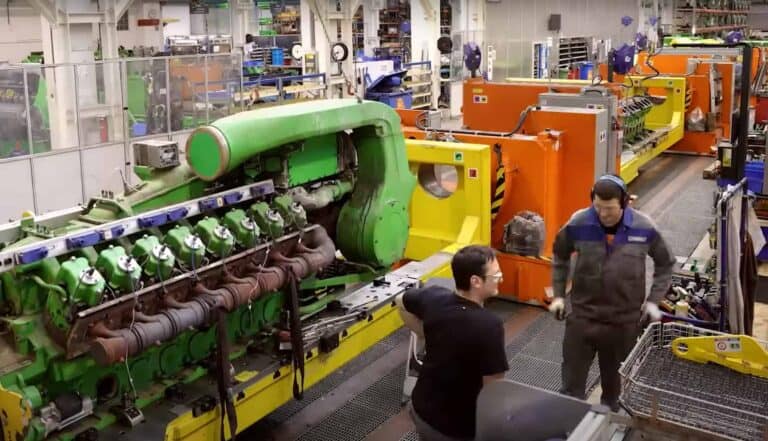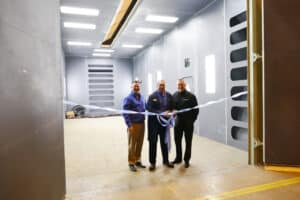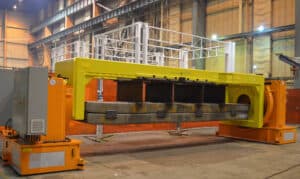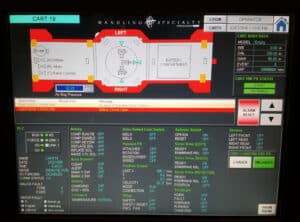Integrating Robust Safety into Your Custom AGV for Assembly Workflows
Introduction: The Imperative of Safety in Custom AGVs for Assembly
Modern assembly workflows are under immense pressure to increase throughput, improve precision, and enhance operator well-being. In this assembly environment, automation has become a critical driver of success. The automated guided vehicle (AGV) market is a testament to this shift, with projections showing growth from USD 2.75 billion in 2025 to USD 5.44 billion by 2032. While standard AGVs offer significant benefits, custom-engineered solutions are uniquely positioned to meet the specific demands of complex assembly lines. However, unlocking their full potential requires moving beyond efficiency metrics and placing an unwavering focus on a foundational element: robust, integrated safety.
The Evolution of Assembly Workflows and Custom AGV Adoption
Traditional assembly lines, characterized by fixed conveyor systems and manual material handling, are giving way to more flexible, dynamic models. This evolution is driven by the need for mass customization, shorter product lifecycles, and greater operational agility. Automated guided vehicles are central to this transformation, providing the flexibility to transport components, sub-assemblies, and tools precisely when and where they are needed, breaking free from the constraints of rigid infrastructure.
Why Custom AGVs are Essential for Modern Assembly Operations
Off-the-shelf Automated Guided Vehicle solutions can manage basic material transport, but assembly workflows present unique challenges. Custom AGVs are engineered to address these specific needs, from handling delicate or unusually shaped components to integrating seamlessly with specialized manufacturing equipment. This tailored approach ensures the AGV is not just a vehicle but a fully integrated part of the production process, optimizing material flow and boosting overall performance.
The Non-Negotiable Role of Robust Safety in Dynamic Assembly Environments
In a dynamic assembly environment, where human operators and automated systems work in close proximity, safety cannot be an afterthought—it must be the core design principle for all automated guided vehicles. A single safety incident can lead to catastrophic consequences, including operator injury, equipment damage, production halts, and irreparable harm to a company’s reputation. Robust safety features are the bedrock upon which reliable and efficient automation is built.
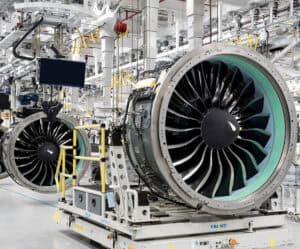
Article Overview: Engineering Safety from Design to Deployment
This article provides a comprehensive guide to integrating robust safety into your custom AGV for assembly workflows. We will explore the unique safety landscape of AGV systems in industrial environments, delve into proactive design principles, examine the advanced technologies that enhance safety, and discuss strategies for ensuring safe human-robot collaboration and building a complete safety ecosystem.
Understanding the Unique Safety Landscape of Assembly Workflows
Industrial automation in assembly environments are fundamentally different from typical warehouse or logistics settings. The intricate dance between operators, machinery, and work-in-progress materials creates a complex safety landscape that demands a specialized approach for any automated guided vehicle.
Close Proximity to Human Operators: A Core Challenge
Assembly floors are teeming with human activity. Operators are not just bystanders; they are active participants, often working directly alongside the AGV system. This close interaction necessitates advanced safety systems that can reliably detect human presence, predict movement, and react instantaneously to prevent collisions. This is particularly crucial in an industry where workers already face risks; for example, the manufacturing industry has an incidence rate of 2.8 injuries per 100 workers.
Dynamic and Often Changing Assembly Layouts
Assembly lines are not static, nor are the flexible manufacturing cells within. Production needs can dictate frequent changes in workstation placement, equipment layout, and material staging areas. An AGV’s safety and navigation system must be adaptable enough to handle these changes without extensive reprogramming. A system reliant solely on fixed paths, like simple magnetic tape, may become a hazard in an environment that requires flexibility. This is where smart navigation systems like laser navigation come in.
Precision and Repetitive Tasks: Mitigating Error Risks
AGVs in assembly and manufacturing facilities are often tasked with delivering specific parts to specific stations with high precision. An error in positioning or delivery can disrupt the entire workflow or lead to incorrect assembly. The safety system must ensure the robot maintains positional accuracy and has protocols to handle any deviations, preventing potential damage to the product, people, or surrounding equipment.
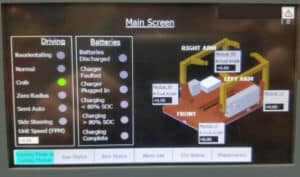
Complex Material Flow and Work-in-Progress Movement
The flow of materials in an assembly setting is complex, involving raw components, sub-assemblies, and finished goods all moving concurrently. A custom AGV must navigate this intricate flow safely, accounting for the variable sizes, weights, and handling requirements of different materials. This requires a sophisticated understanding of the overall material handling strategy and how autonomous guided vehicles navigate. Handling Specialty are experts in custom AGV systems across multiple industries.
Intersections and Shared Pathways with Other Equipment and Personnel
AGV paths frequently intersect with walkways for personnel and routes for other equipment like forklifts or manual carts. These shared spaces are high-risk zones and so safety demands of an AGV system is integral. Inclusive of laser target navigation, the AGV’s safety protocol must include clear communication methods and traffic management rules to navigate these intersections without conflict, ensuring predictable and safe movement for everyone.
The Economic and Ethical Imperative of Zero Accidents
The goal for any operation must be zero accidents. Ethically, protecting the workforce is a primary responsibility. Economically, accidents are incredibly costly, leading to downtime, workers’ compensation claims, regulatory fines, and decreased morale. Investing in robust safety technology for your AGV solution is a direct investment in operational reliability and financial stability.
Proactive Safety Design Principles for Custom AGVs
Achieving a zero-accident environment starts long before an AGV touches the factory floor. It begins with a proactive design philosophy from your OEM where safety is an integral component of the engineering process, not a feature added at the end.
Safety as a Core Specification, Not an Afterthought
When developing a custom AGV, safety requirements should be defined with the same priority as performance metrics like speed, load capacity, and battery life. This involves specifying the necessary sensors, control system logic, and failsafe behaviors from the outset. This “safety-by-design” approach ensures that safety is deeply embedded in the AGV’s hardware and software architecture following any industry safety standards.
Adherence to Industry Safety Standards and Regulations (e.g., ANSI/ITSDF B56.5, ISO 3691-4)
Compliance with established industry standards is non-negotiable. Standards like ANSI/ITSDF B56.5 for guided industrial vehicles and ISO 3691-4 for driverless industrial trucks provide a comprehensive framework for designing, operating, and maintaining safe AGV systems. Adhering to these regulations ensures that the AGV solution meets internationally recognized safety benchmarks. A quality AGV design/build firm like Handling Specialty has the knowledge and experience to incorporate all safety standards.
Comprehensive Risk Assessment and Mitigation Strategies for Custom Solutions
Every assembly environment is unique. A thorough risk assessment must be conducted for each specific application, identifying all potential hazards. This includes analyzing the physical layout, workflow processes, operator interactions, and potential failure modes. Based on this assessment, specific mitigation strategies can be engineered into the custom AGV solution, directly addressing the identified risks.
Designing for Redundancy in Critical Safety Systems
A single point of failure should never lead to a dangerous situation. Critical safety systems, such as obstacle detection sensors and emergency stop circuits, must be designed with redundancy. For example, an AGV might use both a LiDAR scanner and a physical bumper as redundant layers of protection. If one system fails, the other can still trigger a safe stop.
Incorporating Failsafe Mechanisms and Emergency Procedures
Failsafe design ensures that in the event of a system malfunction—such as a loss of power, communication, or a sensor failure—the AGV defaults to a safe state, typically a controlled stop. Clearly defined and easily accessible emergency stop mechanisms (E-stops) are also essential, allowing any operator to halt the robot immediately if they perceive a hazard the AGV missed while in motion using magnetic navigation, laser, or machine vision guidance cameras to complete its rounds. E Stops can be found on an AGVs vehicle controller if it is a hybrid AGV as well.
The Role of Expertise in Safety-First Custom AGV Engineering
Integrating these principles effectively requires deep expertise in automation, robotics, and industrial safety. Partnering with a solution provider like Handling Specialty who has a proven track record in safety-first engineering is crucial. Their experience ensures that the custom AGV product is not only optimized for performance but is fundamentally designed for safe and reliable operation.
Engineering Enhanced AGV Safety Through Advanced Technologies
A proactive design philosophy is brought to life through the strategic implementation of advanced technology. Modern sensors, such as inductive sensors, sophisticated navigation technologies, and robust control systems work in concert to create an AGV that is acutely aware of its surroundings and capable of navigating them safely.
Advanced Navigation and Localization for Precision and Predictability
Predictable movement is safe movement. Advanced navigation technologies are crucial for ensuring an AGV follows its intended path with high precision. While traditional methods like magnetic tape have their place, modern solutions offer greater flexibility and safety. LiDAR (Light Detection and Ranging) and vision-based navigation allow the AGV to build a map of its environment and localize itself in real-time, enabling it to dynamically adjust its path to avoid unmapped obstacles while maintaining course.
Sophisticated Perception and Collision Avoidance Systems
An AGV must be able to perceive its environment in three dimensions to avoid collisions. A comprehensive sensor suite is key.
- Safety LiDAR Scanners: These devices create horizontal safety fields around the AGV, detecting obstacles in its path and triggering speed reductions or complete stops.
- 3D Cameras: Providing depth perception, these cameras can identify overhead obstacles or objects on the floor that 2D scanners might miss.
- Ultrasonic Sensors: These are effective for detecting objects at very close range, providing an additional layer of protection during precise docking maneuvers.
These technologies work together to create overlapping fields of awareness, ensuring the automatic guided vehicles have a complete and redundant view of its surroundings.
Robust AGV Control Systems and Emergency Mechanisms
The “brain” of the AGV—its control system—is responsible for processing sensor data and executing safe actions. This system must be robust and reliable. It governs everything from acceleration and deceleration rates to turning speeds, ensuring the vehicle remains stable, especially when carrying a heavy load. The controller also manages the logic for emergency stops, ensuring that when an E-stop is triggered, the AGV comes to a safe, controlled halt without creating a secondary hazard.
Ensuring Human-AGV Collaboration and Interaction Safety
In assembly workflows, AGVs are not just material transporters; they are collaborators. Designing for safe and effective interaction between humans and this automation technology is essential for a productive and secure environment.
Designing for Intuitive Human-AGV Interaction
Operators should be able to understand an AGV’s status and intentions at a glance. This is achieved through clear and intuitive communication cues.
- Visual Alerts: LED light strips can change color to indicate the AGV’s mode—blue for normal travel, yellow for turning or slowing, and red for a stopped or fault state.
- Audible Signals: Non-intrusive chimes or tones can signal an approaching AGV, especially at blind corners or noisy workstations.
- Projected Warnings: Some advanced AGVs can project lights or symbols onto the floor ahead of them to clearly mark their path or signal an impending stop.
Training and Procedural Safety for Human Operators
Technology alone is not enough. All personnel who will interact with the AGV system must receive comprehensive training. This training should cover the AGV’s basic functions, the meaning of its visual and audible alerts, designated safe zones and walkways, and the correct procedures for engaging emergency stops. Well-defined procedures ensure that human behavior complements the AGV’s engineered safety features.
Leveraging Communication for Enhanced Safety
Effective communication between the AGV, operators, and the central control system is vital. An operator interface or tablet can provide detailed diagnostic information, allowing for quick troubleshooting. The AGV can also signal its intent to the fleet management system, which can then relay information to other AGVs or alert supervisors to potential bottlenecks or safety concerns.
Building a Comprehensive Safety Ecosystem in Assembly Facilities
The safety of a single AGV is important, but true operational safety is achieved when the entire fleet and the surrounding environment are managed as a single, integrated ecosystem.
Fleet Management and Coordinated Movement for Congestion Avoidance
A sophisticated fleet management system is the conductor of the AGV orchestra. It provides centralized control, assigning tasks and optimizing routes to prevent traffic jams and minimize the risk of collisions between vehicles. By monitoring the location and status of every robot, the system can dynamically re-route AGVs to avoid congestion in real time, ensuring a smooth and safe flow of material handling throughout the facility. This level of coordination is critical as the number of automated systems in a single facility grows.
Conclusion
Integrating automated guided vehicles into assembly workflows offers a powerful solution for boosting efficiency, precision, and flexibility. However, the success of this automation hinges entirely on the implementation of a robust, proactive safety strategy. Safety is not a feature to be added on; it is the fundamental framework upon which high-performance, reliable systems are built.
By treating safety as a core design specification, adhering to stringent industry standards, and leveraging advanced navigation and perception technologies, you can engineer a custom AGV that is perfectly tailored to your operational needs without compromising the well-being of your team. This commitment extends beyond the robot itself to encompass comprehensive operator training and intelligent fleet management, creating a holistic safety ecosystem. Ultimately, a safety-first approach to AGV integration is not a cost center—it is a strategic investment that protects your people, safeguards your product, and ensures the long-term performance and reliability of your entire assembly operation.
Contact Handling Specialty if you’d like to build safety and efficiency into your assembly facility.

